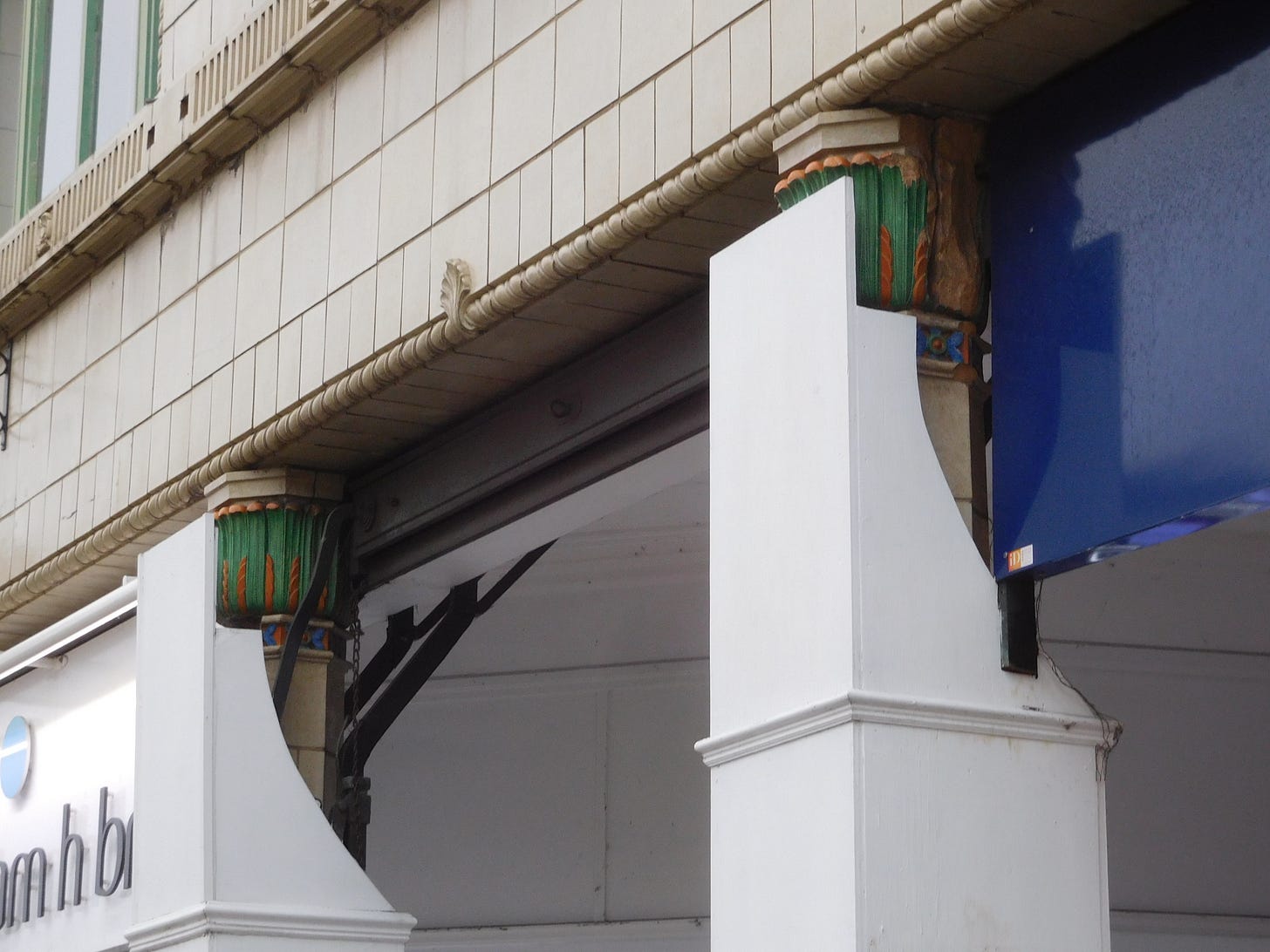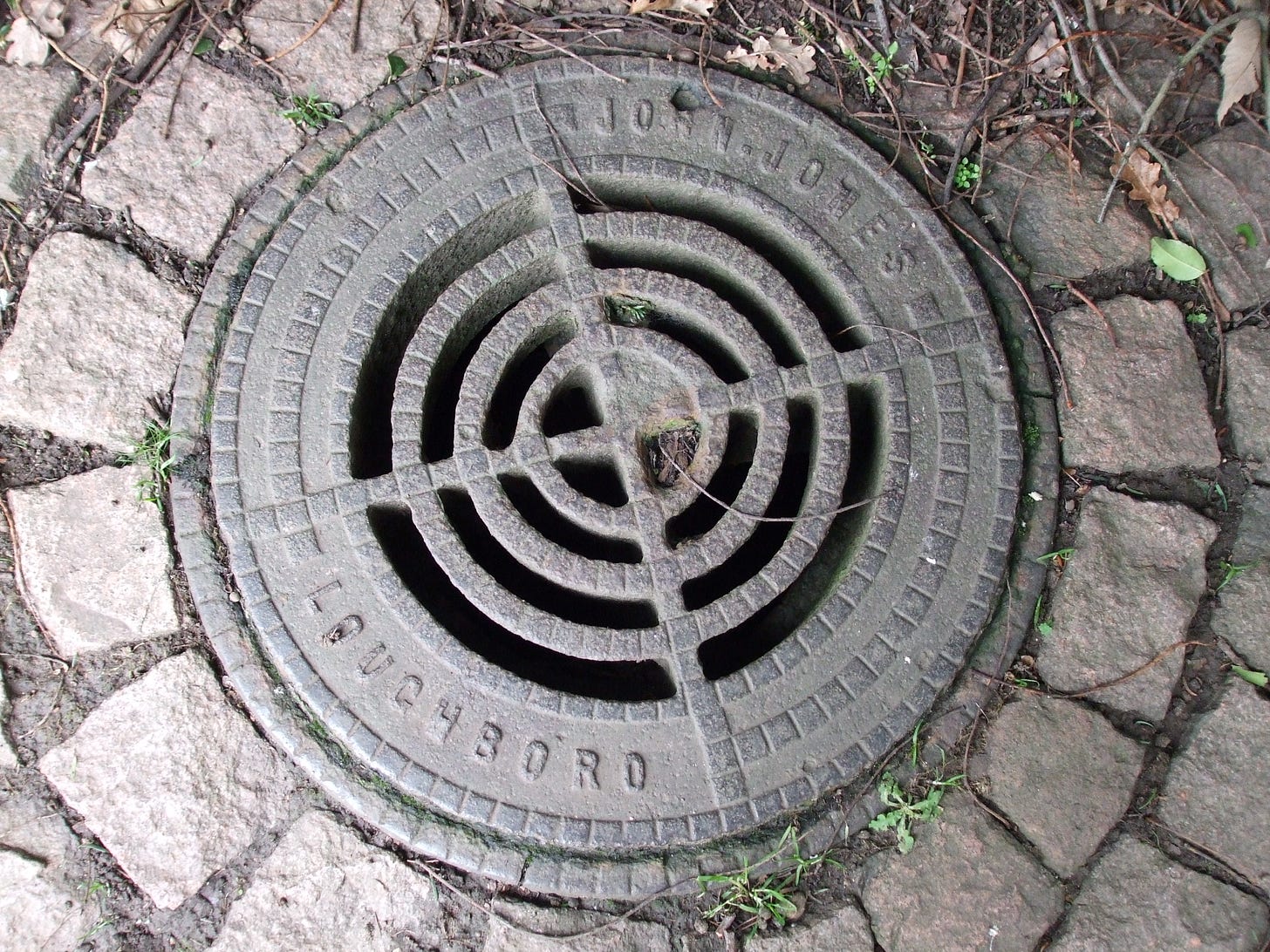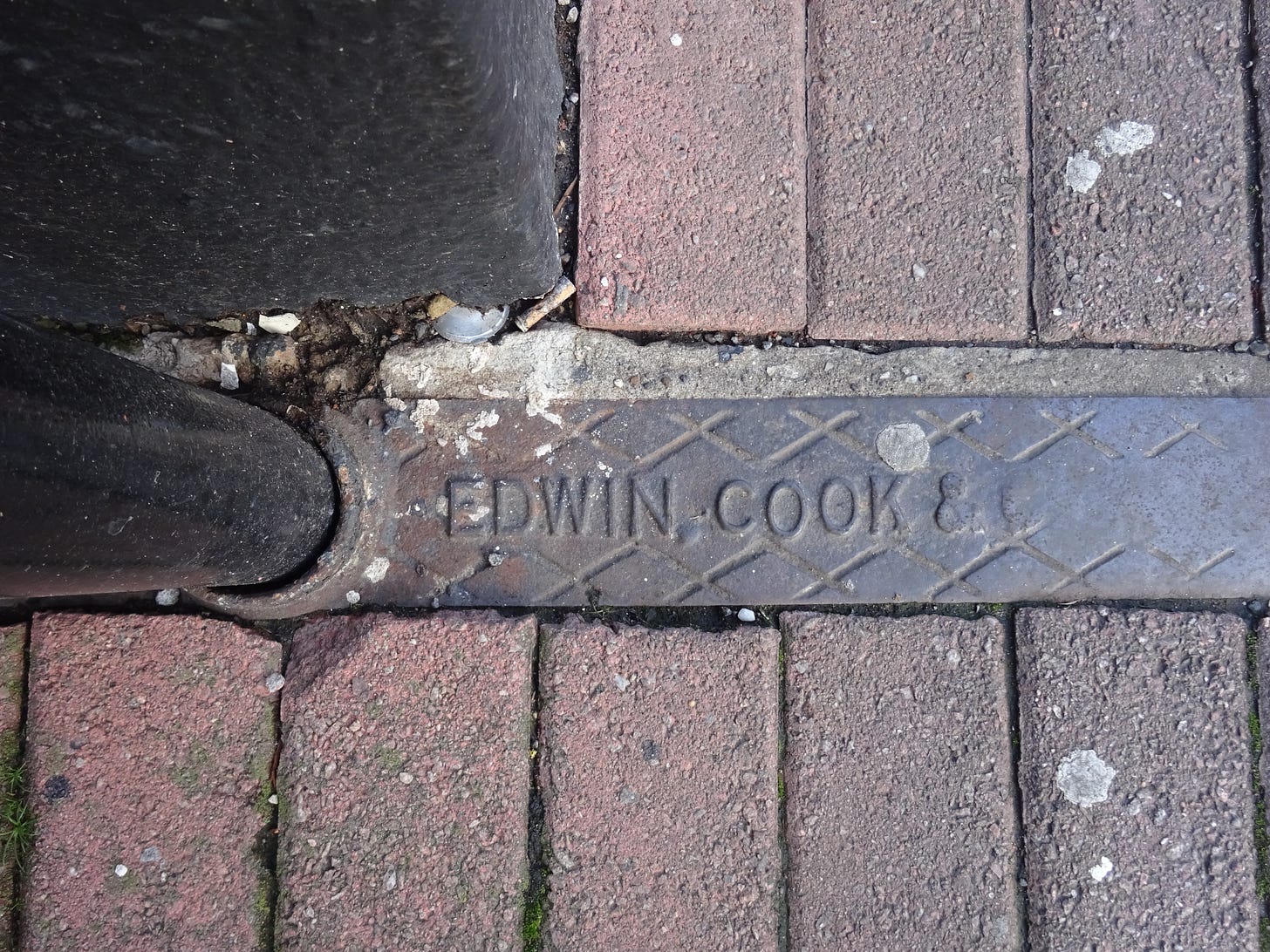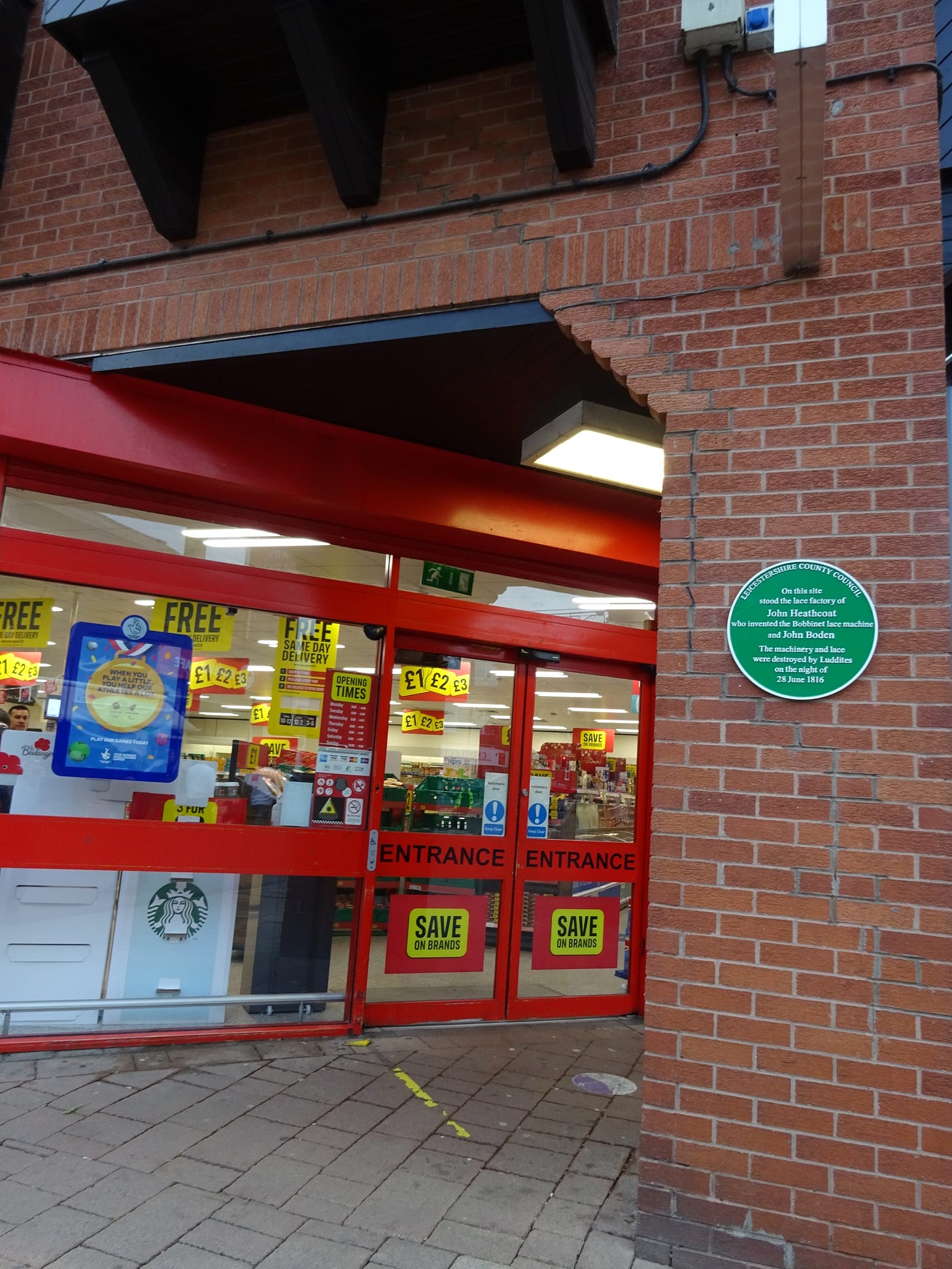Look Up, Look Down, Look All Around
Everywhere
When I did my training to become an accredited tour guide, delivered by the same person who had trained those famous Blue Badge Guides, I was astonished when it was suggested to our group that we leave the classroom and go outside into Town Hall Square for an hour! We were told to come back to class and describe the history of the square, simply from our observations of the area, its buildings, and its street furniture. To fulfil this brief, we had, of course, to use all our senses, but most especially, our eyes, and to look not only up and down, but all around, too![1]
I thought I knew Town Hall Square in Leicester, having worked in the city centre for nearly three decades, however, I was always rushing through, so had I ever really noticed anything about the area, as I headed off to my destination? Perhaps like many people, I rarely paused to consider the things around me, barely stopping, and just taking everything for granted. So, it wasn’t until that fateful guide training day that I really observed Town Hall Square - a turning point in my local history journey!
I stopped still, looked around me, and breathed in my surroundings, learning oh so much about the area, without so much as picking up a book, consulting the internet, or journeying to the county record office!
You could do the same in your area! In fact, it’s essential that when you’re walking around your local town, you might look up above the shop fronts, for it is there that you will see all sorts of details that might reveal something about the history of the buildings, and even the wider area. Don’t be afraid to open your eyes and see things as though for the very first time!
You might see dates or monograms carved into tablets on the upper floors; this, of course, applies equally outside of the town centre, in areas of housing. Or maybe the building bears a coat of arms. You might suddenly become aware of three-dimensional objects jutting out from the building façade. Maybe the utilitarian drain hopper isn’t quite as plain as at first it seems, and perhaps has a date or a monogram on it. And had you really noticed those allegorical terracotta figures carved into the string course on that otherwise ordinary building? If you look even higher, towards the roofs, you might see Welsh slate, pantiles, or Swithland slate, all potential pointers to a building’s history.
Terraced housing celebrating Queen Victoria’s Jubilee, 1897. All images copyright of Lynne Dyer. Not to be reproduced without permission.
Hidden Art Deco pillars on the former offices of the Echo Press.
On the other hand, looking down towards the floor beneath your feet can also reveal secrets you may not have noticed before. Drain covers often carry interesting inscriptions, revealing the maker and the place of production, as do gulley covers. The surface upon which you’re walking might be paved with local stone, perhaps cobbled, or maybe tarmacked. There may be plaques mounted in the path – heritage plaques, plaques celebrating countries your town is twinned with, or maybe a there’s a trail of plaques commemorating local famous people.
John Jones Drain Cover in the cemetery.
Edwin Cook gulley cover besides the Three Nuns pub.
Meanwhile, looking all around, especially at things you would normally pass by without a second glance, can reveal all manner of information. Railings might bear the name of the maker, which could be a local company, or perhaps might not be (!), or may include a design element that has some local meaning. Walls might be made of a variety of different coloured bricks, constructed in various bonds, and if you’re lucky, the makers mark might be visible. Some of your buildings might bear a blue plaque, or your town’s equivalent, recognising its importance, either for its construction, or of someone who may have lived there. Maybe the drinking fountain in your town centre has a big story to tell? Perhaps those statues and sculptures in your park, or local streets have some significance that you’d never before considered, or can reveal some overt or even secret history?
New falcon railings at the site of the former Falcon Works
I’d encourage you to try this approach for yourself! Look up, down, and all around, and you might be surprised by the number of times you catch yourself saying ‘Gosh, I didn’t realise that!’, ‘Wow! How come I’ve never noticed that before?’ or, ‘Ooooh, I wonder what the significance of this is?’
Make sure you always have some way of recording your findings in situ – a notebook and pen, a camera, or a mobile phone. Your next step will be to investigate the name of the company that appears on that drain cover, or those initials that appear on that monogram. And what better place to start than your local studies library?![2]
Plaque on the Iceland building commemorating the former factory of John Heathcoat
Of course, if you’re focussing your local history research on a specific place, perhaps for a one-place study, looking up, down, and all around can be extremely exciting, interesting, and illuminating, and will help you find your place’s unique identity. It’s also likely that once you’ve got used to doing this in your own place, you’ll find yourself adopting the same approach in other places you might visit! And this, too, is invaluable. It can help you to put your own place in context, as, unless you really are researching an island, then no place is an island, and there will be commonalities between many different places; there will be ways of life that cross parish borders, and there will be aspects of national history that transcend physical, geographical, and cultural boundaries.
Lynne Dyer. After graduating from Loughborough University, Lynne worked as a professional librarian for 40 years. A trained tour guide, in 2013 Lynne created the blog lynneaboutloughborough, to promote the town, and posts have been viewed over 550,000 times. Lynne has a local history qualification from OUDCE, and has written 4 books about Loughborough for Amberley.
Find Lynne on X @stjerome1st on blogger www.lynneaboutloughborough.blogspot.co.uk and on email lynneaboutloughborough[at]gmail[dot]com
References and Resources:
Semih Aktekin, ‘The Place and Importance of Local History In The Secondary History Education’. In: Journal of Theory and Practice in Education, Vol.6, No. 1, 2010, pp.86-105. Available from: https://dergipark.org.tr/tr/download/article-file/63299
I’ve included the above reference because the author writes the wonderfully apt phrase, using ‘boot as well as book’, thus confirming that observation is a valid enquiry method. Combining this with desk-based research can lead to the most exciting discoveries!
Margaret Crush, Town Trail (1985)
Dean Kirby, ‘Jeremy Corbyn: Admirers of drains and manhole covers find a hero in the Labour leader’. Available from: https://www.independent.co.uk/news/uk/home-news/jeremy-corbyn-admirers-of-drains-and-manhole-covers-find-a-hero-in-the-labour-leader-a6668401.html (2015)
[1] Lynne Dyer, Secret Loughborough (2019)
[2] Lynne Dyer, ‘Local Studies Libraries’, How-to History. https://howtohistory.substack.com/p/local-studies-libraries (2023)









I have an LP record of the musical Baker Street starring Fritz Weaver, one of my favorite lines is Holmes’ admonition to Watson, “put your brain to work, not just the optic nerve!” Another application of such advice is to really look at period photographs for the additional cues about the people and places in them.